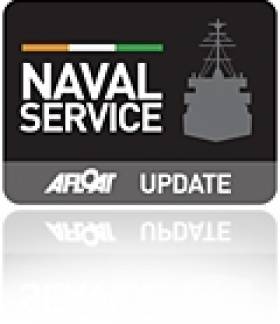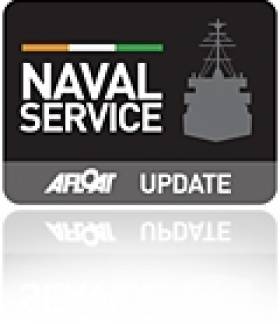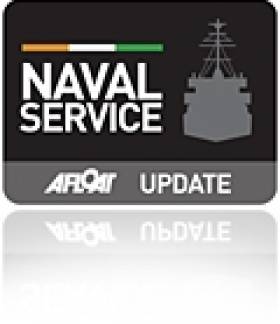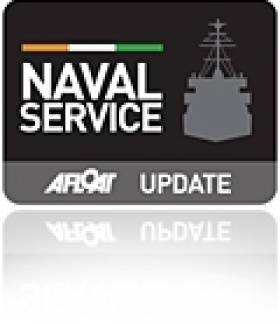Displaying items by tag: Navy
Naval Service OPV’s Make Mediterranean Meeting Between Deployments
#NavalMedTransfer – In an undisclosed location in the western Mediterranean, the Naval Service L.E. Niamh and L.E. Samuel Beckett met at rendez-vous point yesterday, writes Jehan Ashmore.
The pair of offshore patrol vessels (OPV) transferred equipment and key personnel in the early hours. This was followed by an exchange of ceremonial salutes before each of the OPV’s proceeded in opposite route directions.
L.E. Niamh dating from 2001, has completed her search and rescue (SAR) duties of refugees and migrants and was heading west bound in the Mediterranean. She is expected back at the Naval Base in Haulbowline, Cork Harbour this Friday.
Since departing Irish waters in July, L.E. Niamh has served with international navies to assist SAR missions under the authority of the Italian Navy. This has seen numerous SAR calls involving overcrowded and unseaworthy boats trafficking people.
Replacing L.E. Niamh is her successor, L.E. Samuel Beckett which is an enhanced version of the second ‘Roisin’ class OPV80 series. The ‘Beckett’ only entered service last year and forms the leadship of the trio of OPV90 class ordered from a UK shipyard.
The €54m vessel is making an eastbound voyage so to continue in the humanitarian role that was first undertaken earlier this year with the deployment of flagship. L.E. Eithne.
As reported today, funding has been secured for the Defence Forces that is to include a replacement programme for the Naval Service with a second phase of new patrol vessels.
Two of the newbuilds are to be OPV’s. As for the third unit this is to be a multi role vessel (MRV) more like the ‘Eithne’ albeit not designed to the flagship’s Helicopter Patrol Vessel (HPV) early career role when she actually carried a helicopter. The MRV will be able at least to carry out ship to air-lift operations including freight.
The newbuilds are to replace an ageing trio, the above mentioned L.E Eithne and also dating from 1984, a pair of coastal patrol vessels, CPV’s L.E. Orla and sister L.E. Ciara.
For more about the latter CPV’s existing career following that carried out in warmer climes, Ships Monthly (current issue) features the former Royal Navy ‘Peacock’ class that began service in Hong Kong.
Capital Funding Welcomed by Minister As White Paper on Defence Is Implemented
#FundingDefence - A significant boost in capital funding across the Defence Forces has been welcomed by the Minister of Defence. The funding for the Defence Sector is contained in the Capital Plan as an important element of the implementation of the White Paper on Defence.
The €437m allocated to Defence, including an additional €65m over the 2016-2021 timeframe, will provide a major boost from a strategic perspective and it will allow Defence to make significant investments in equipment and infrastructure over the lifetime of the Capital Plan.
Overall, the Defence capital envelope for the period 2016-2021 is €437m. This allocation will facilitate strategic decisions on planning for ongoing investment in defence equipment and infrastructure, over the coming years. The recently published White Paper on Defence sets out Ireland’s defence policy framework for the next decade. It has identified the increasingly complex nature of security threats in the world today and the associated capability requirements. It sets out proposals for the replacement of major equipment platforms over the next decade and other priorities for the Army, Air Corps and Naval Service, in accordance with capability requirements.
The funding allocated in this Capital Plan will play a vital role is ensuring that the priorities identified in the White Paper can be met and that the Defence Forces can deliver fully on the roles assigned by Government. The duration of the plan, 2016 to 2021, is particularly significant in allowing for strategic medium-term planning so critical in the Defence environment.
While specific investment decisions, as prioritised in the White Paper, are still at the planning stage, the broad areas in which these capital funds will be invested are as follows:-
• Replacement programmes for defensive equipment for the Naval Service (as previously reported on Afloat.ie) across the Army and the Air Corps, including payments arising under the Naval Vessel replacement programme;
• Investment in Defence Forces Built Infrastructure including refurbishment of the Defence property portfolio and provision of replacement and additional facilities where required;
• Development of an international facility at the UN Training School in the Curragh – to facilitate training in peace support and in conflict resolution;
• Purchase of new and replacement Information and Communication Technology hardware across the Department and the Defence Forces.
To Join Rescue Mission LÉ Samuel Beckett Heads to the Med
#Beckett2Med - Due to depart her base in Haulbowline, Co Cork, this morning, LÉ Samuel Beckett (P61) is to take over refugee rescue missions in the Mediterranean from LÉ Niamh.
According to The Irish Examiner, it’s expected that she will take a week to get to her area of operations between Sicily and Libya and prior to starting her mission, her 59-strong crew under the command of Lieutenant Commander Anthony Geraghty, will get a briefing from the Italian authorities in Sicily.
Meanwhile, LÉ Niamh’s crew have finished their mission and are currently enjoying some R&R in the Maltese capital Valletta.
Yesterday the crew hosted a reception for the Irish ambassador and they will depart for home on Saturday. Depending on weather she should arrive in Haulbowline on Friday, October 2.
Both ships will rendezvous somewhere near Gibraltar in the coming days, where some personnel and equipment will be transferred between them.
For much more on the refugee migrant crisis, click here.
Commissioning Ceremony of Naval Service Cadet Class
#CadetClass- Simon Coveney, Minister for Defence, this morning attended a Naval Service Commissioning Ceremony of the 53rd Naval Service Cadet Class.
The event took place at the Naval Base, in Haulbowline, Co. Cork, where the Minister offered his congratulations to the newly commissioned officers and remarked that “I offer my warmest congratulations to all of you for the commitment you are making to the State. Each one of you, together with your families and friends, can be justifiably proud of your achievement”.
Minister Coveney also paid tribute to the ongoing humanitarian work being carried out by the Naval Service in the Mediterranean “The actions of both the LÉ Eithne and LÉ Niamh have highlighted the capability and commitment that has always been the hallmark of Ireland’s Naval Service”.
The Minister said that the L.É. Samuel Beckett will be deployed to the Mediterranean from the end of September until the end of November this year and stated that “The people of Ireland can truly be proud of the marvellous work the Naval Service has done and is continuing to do and I wish them every continued success with their work”.
Full Sail for Naval Race in Cork Harbour – Photo Gallery Here!



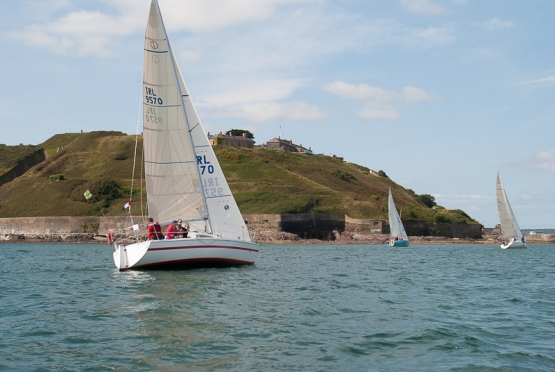

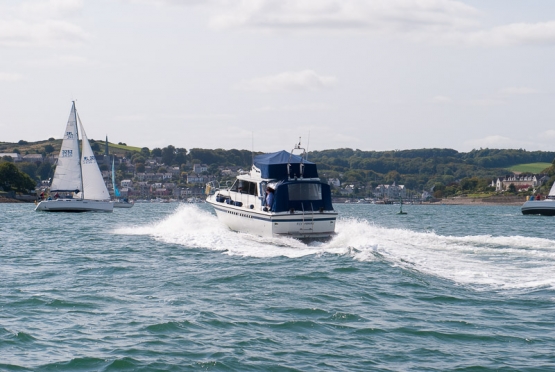



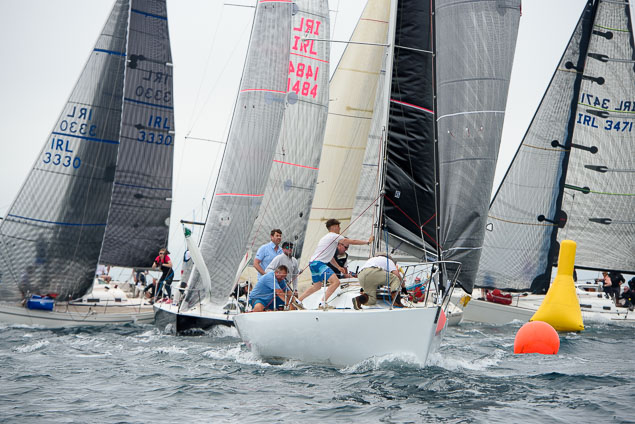
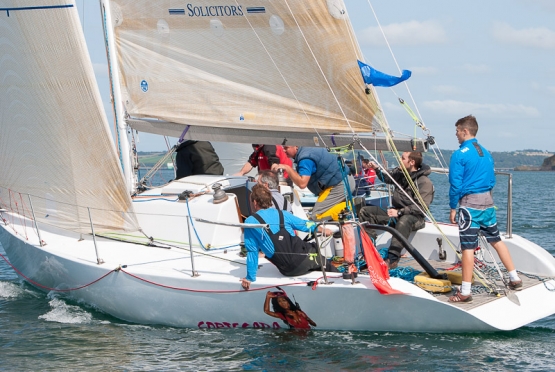


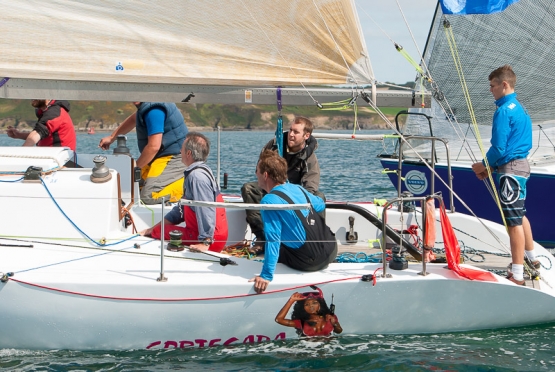
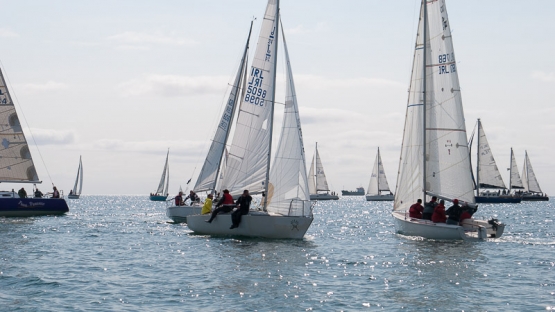
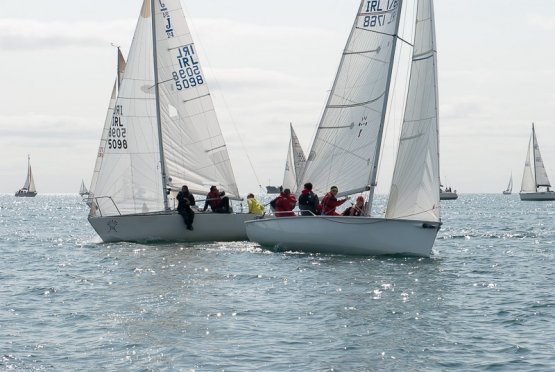


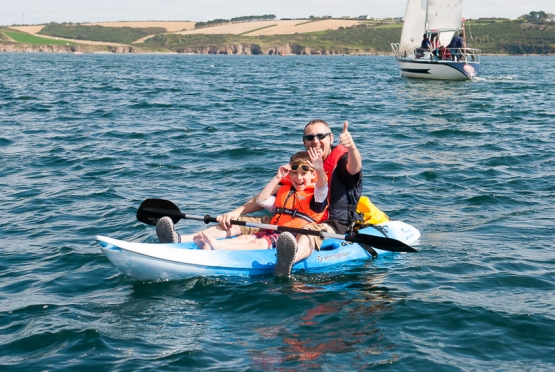
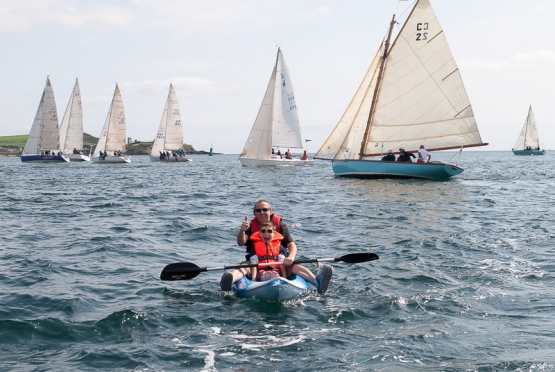

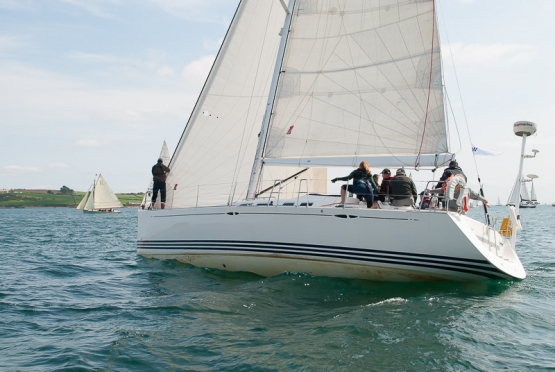



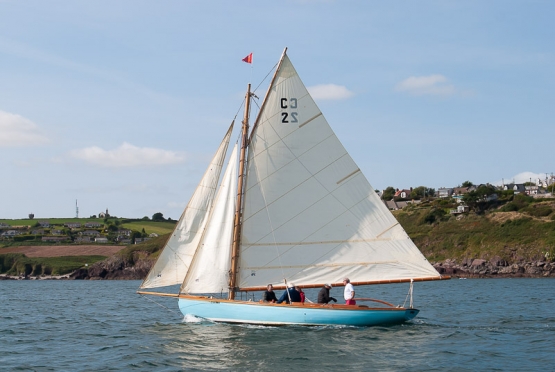
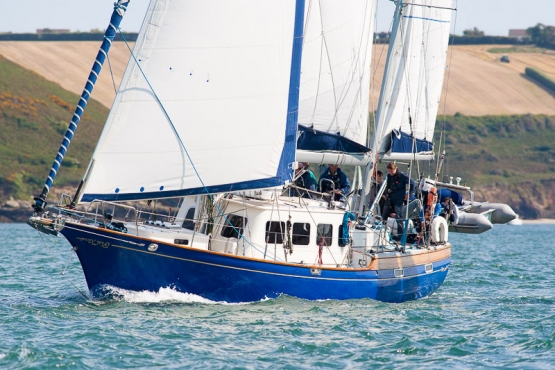
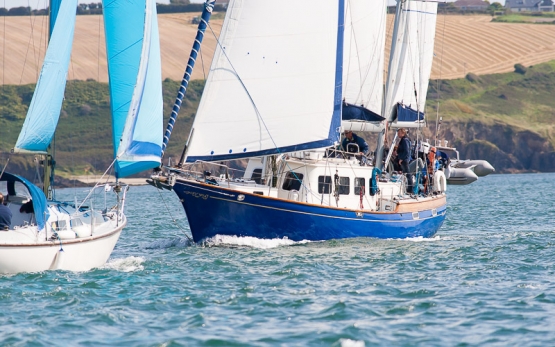
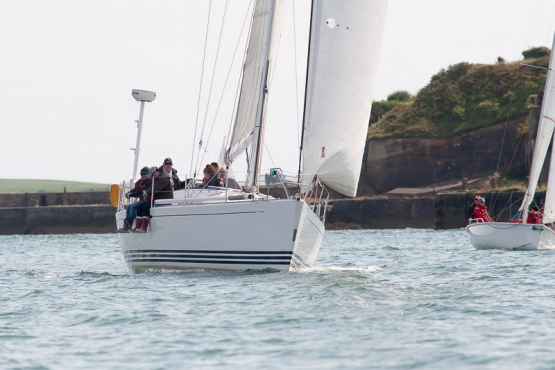
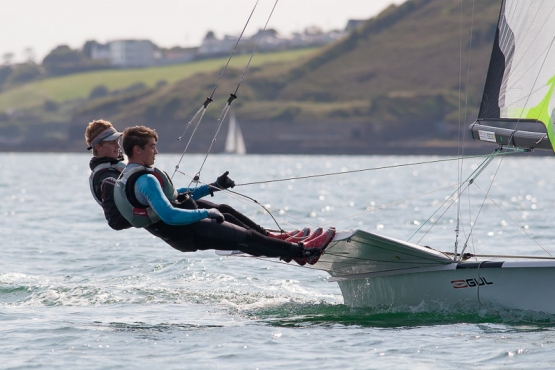
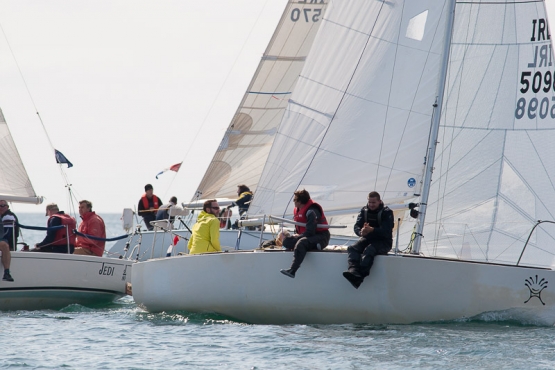
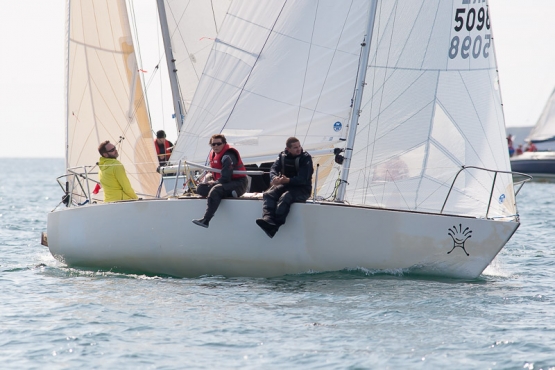
Naval Vessel L.É. Niamh Departs Cork to Assist in the Humanitarian Crisis in the Mediterranean
#navy – L.É. Niamh under the command of her captain, Lieutenant Commander Daniel Wall departs the Naval Base, Haulbowline this evening, en route for the Mediterranean to assist the Italian authorities in the humanitarian operation to rescue migrants fleeing North Africa.
The Minister for Defence, Mr. Simon Coveney, T.D., had announced earlier this month that L.É. Niamh would deploy to the Mediterranean to continue Ireland's contribution to the search and rescue mission. L.É. Eithne has spent the past eight weeks in the Mediterranean and has set out on her return to Irish shores. A total of 3,377 people have been rescued by L.É. Eithne from the waters between Libya and Sicily.
Defence Minister Simon Coveney said "I had the opportunity of visiting L.É. Eithne last Tuesday. I conveyed to the personnel our deep appreciation for the outstanding manner in which they performed their duties on overseas service on behalf of the Government and the people of Ireland. I am pleased to be here today to convey my appreciation to you, in advance of your deployment."
L.É. Niamh with a crew of 55 Naval Service personnel and 2 medics from the Army Medical Corps will continue the remarkable work started by L.É. Eithne. The Minister went on to say "L.É. Niamh is expected to be deployed in the Mediterranean until September, dependent on the operational demands and requirements arising."
The Minister concluded by saying "I want to wish Lieutenant Commander Daniel Wall and the crew of L.É. Niamh a safe and successful mission. You are travelling to the Mediterranean with my best wishes and with those of the rest of the nation."
Irish Navy Pick Up Suspected Med Trafficker
#MedTrafficker - The LE Eithne has picked up a suspected people smuggler amongst 646 desperate migrants has been arrested by Italian Police.
Bairam Ltayef (24), a Tunisian national, was detained in the Sicilian capital Palermo after he was identified by refugees who were interviewed by officers.
It is understood that the crew of the LE Eithne were unaware that the man was a suspected trafficker.
Drowned
It is estimated that at least 1,850 people have drowned in the Mediterranean this year alone, with many falling victim to people traffickers in their desperation to flee war and poverty in the Middle East and Africa.
The State Police told the Herald that they "identified and arrested" Mr Ltayef on suspicion that he was the "smuggler" of a boat of migrants.
A statement explained how the LE Eithne arrived in Palermo on June 30 to offload the migrants, with the Italian police meeting the vessel to assist in the processing of the immigrants.
For more on this development, the Herald.ie has a report here.
Nomination for New Defence Forces Chief of Staff
#NewChiefOFstaff - Rear Admiral Mark Mellett DSM writes The Irish Times has been nominated by Minister for Defence Simon Coveney for the appointment by the President as chief of staff of the Defence Forces.
Rear Admiral Mellett was appointed to the position of deputy chief of staff of the Defence Forces in November 2013.
From Co Mayo, he joined the Naval Service in 1976. His first command was the LÉ Orla in 1992, followed by the LÉ Ciara in 1997 and the flagship LÉ Eithne in 2005 (see related report today).
He will succeed the current chief of staff Lt Gen Conor O'Boyle when he retires in September this year.
Mr Coveney congratulated Rear Admiral Mellet on his new appointment and said that he is looking forward to working with him in the future.
Cork Institute of Technology (CIT) President Dr Brendan Murphy said - "We are delighted with to hear of the appointment of Rear Admiral Mark Mellett as Chief of Staff of the Irish Defence Forces. CIT, since the foundation of the National Maritime College of Ireland ten years ago, has had a long and fruitful relationship with the Irish Naval Service and in particular with Rear Admiral Mellett is his role as Officer Commanding the Irish Naval Service. It has been a long and fruitful relationship particularly as Mark showed great strategic vision. He has been instrumental in the transformation of the Irish Naval Service to a knowledge based institution and the naval service now actively takes part in education and research, playing an important role in the economic development of the country as a whole. I, and CIT, wish him every success in his new role."
Conor Mowlds, Head of the National Marine College of Ireland said " I would like to echo Dr Murphy's words and to give my very best wishes Rear Admiral Mellett. His appointment will add strength to the voice of the growing Irish Maritime Community."
For further details of the career of the Rear Admiral, click here.
Naval Service Rescues More Migrants
#EithneMedCrisis - In operations that took place in two separate incidents writes The Belfast Telegraph, about 50 miles north-west of the Libyan capital Tripoli, men, women and children were taken off two wooden barges.
The crew of the LE Eithne (P31) took part in the first search and rescue after transferring a group of 593 migrants to HMS Bulwark (L15).
The first rescue started at about 8am Irish time when 330 people were safely taken from a barge and immediately afterwards the crew was tasked to assist with another rescue of 317 migrants on another barge.
The migrants included 544 men, 95 women and eight children, the Naval Service said.
#NewEUmigrantMission - L.É. Eithne has rescued a further 519 migrants yesterday, as part of the coordinated response to the migrant crisis in the Mediterranean which was welcomed by Minister for Defence, Mr. Simon Coveney, T.D.
The Minister commented "L.É. Eithne under the command of her captain, Commander Pearse O'Donnell, and her crew are continuing to undertake a key role in addressing the humanitarian crisis in the Mediterranean. The rescue operation today, involving 519 migrants, is yet another example of the worthwhile efforts being undertaken by our Naval Service."
L.E. Eithne was alerted to three craft in potential distress approximately 50 nautical miles northwest of Tripoli.
The Minister confirmed that "L.É. Eithne has completed the rescue of 104 personnel from the first craft, 363 from a second vessel and 53 from a third vessel. This brings the total migrants rescued so far to 2,136."
The Irish Naval Vessel is providing medical assistance, food, water and dry clothes to those in need and will transfer them safely to port in Italy as soon as possible.
New EU Military Operation
Separately the Foreign Affairs Council adopted a Council Decision yesterday to launch a European Union military operation, EUNAVFOR MED as one element of the EU's comprehensive approach to the Mediterranean crisis.
The EUNAVOR MED mission will undertake systematic efforts to identify capture and dispose of vessels and enabling assets, before they are used by traffickers, thereby contributing to disruption of the business model of human smuggling and trafficking networks in the Southern Central Mediterranean.
Phase one of this mission, which focuses on surveillance and assessment of human smuggling and trafficking networks in the Southern Central Mediterranean, will commence in the coming days. Further phases will be subject to assessment by the European Council, taking into account a UN mandate and the consent of the coastal states concerned.
The Minister concluded that "the work of our Naval Service in the Mediterranean is invaluable. The Naval Service will remain in the Mediterranean undertaking humanitarian search and rescue activity. We do, however, need a comprehensive approach to addressing this ongoing crisis. Today's Council Decision to launch an EU mission is just one part of a bigger strategy. The Taoiseach at the EU Heads of State and Government meeting later this week will give further consideration to the broader migration issue".




























